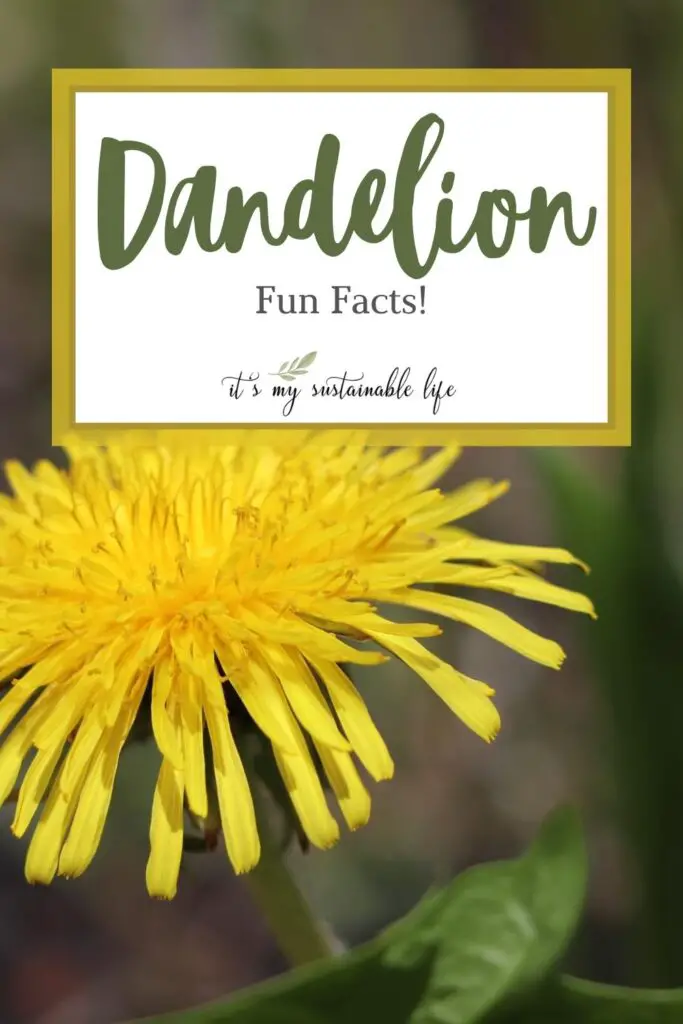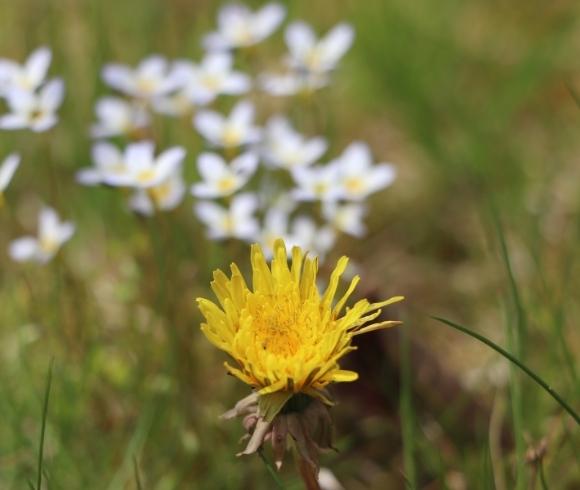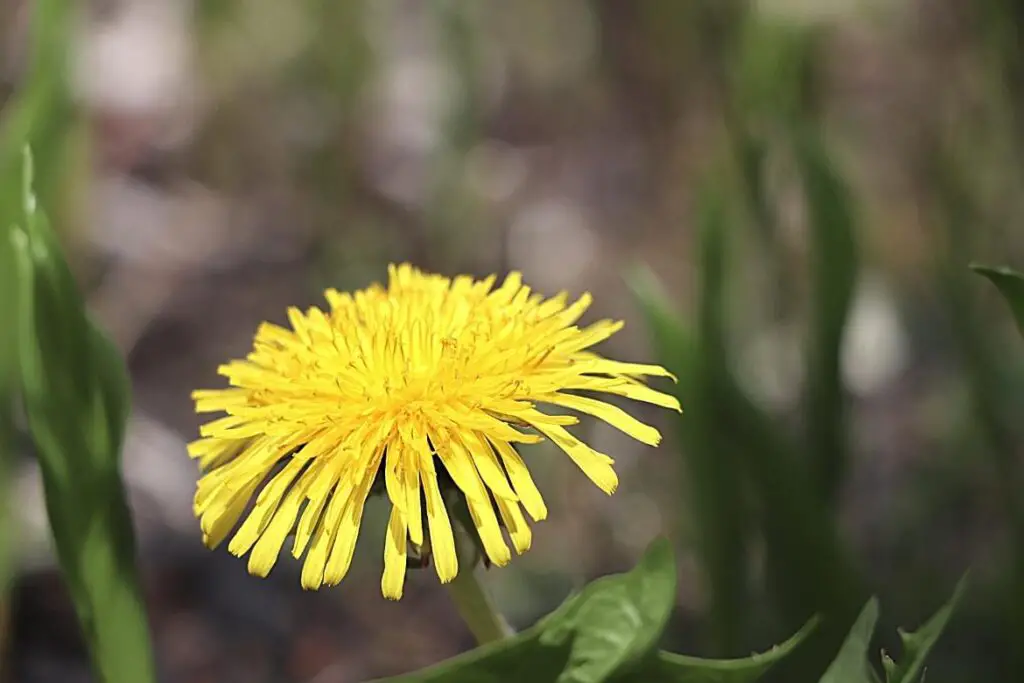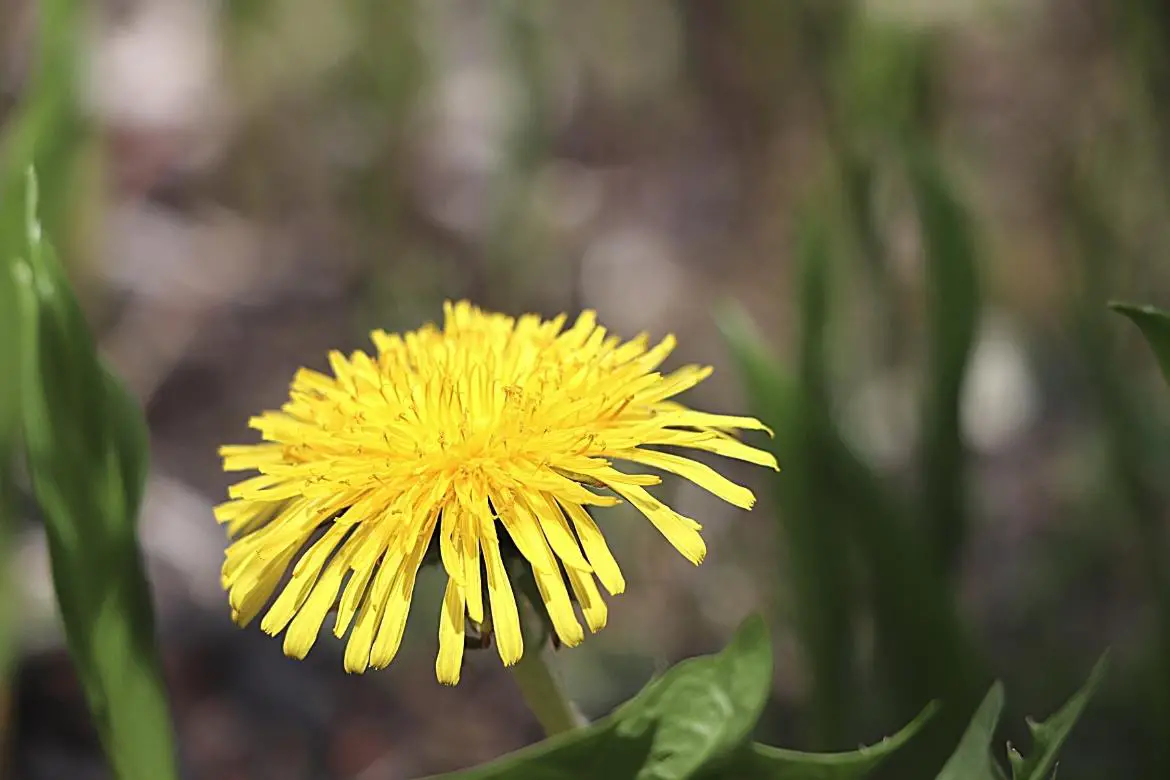Dandelions may be the most recognizable, cheery, sunny flowering plant known by all of any age. No matter if you consider dandelions as a nuisance or as a whimsical “wishing” flower, these dandelion fun facts may have you and the kids thinking of them in a new light!
This post may contain affiliate links at no additional cost to you. By making your purchases through the links on this website, IMSL may make a small percentage at no direct cost to you. IMSL only promotes products we use & truly believe in. Please refer to my Privacy & Disclosures for further information. IMSL thanks you for your support!
The love hate relationship with dandelions is a unique one. When young, the thrill of blowing on those flowers gone to seed and making a wish (dandelions are referred to as the “wishing flower afterall), watching them fly through the air is met with joyfulness. As we age, in this country anyway, the urge to create a lush green lawn void of these sunny flowers is often met with the overuse of chemical treatments in order to eliminate them instead of embracing them.
By shifting our perspective and embracing these beneficial flowers, will have us returning the page back in history, reaping the nutritional & healing properties, helping the environment, and maybe making a wish or two in the process 🌼
DANDELION DEFINED
Dandelion, Taraxacum officinale, one of the largest genus (a biological plant classification) of the Asteraceae (the dandelion being one of over 32,000 known flowering plant species in this family) family, is likely the common variety that most are familiar with. There are, however, hundreds of varieties, depending on who you talk to, of this little sun-loving plant.
With few imposters, the perennial dandelion is native to Eurasia. Introduced to North America from Europe (some say it was brought over to the States on the Mayflower), dandelion has historically been utilized for its many healing properties.
The name itself comes from the French, “dent de lion”. Dent de lion translates to lion’s tooth, referencing the serrated leaf structure.
Although short-lived, the dandelion can withstand harsh growing conditions from excessive heat to frost and over-crowding. I have seen this hearty plant growing from cracks in concrete. Literally!
Sharing Is Caring ❤️

The plant does, however, rejoice when it finds itself growing in rich soil, but what plant wouldn’t? 🌼
The dandelion plant is an herbaceous (no woody stems) plant with taproots (plant with large, center dominant root) that grow additional roots laterally.
ALL parts of the dandelion plant are edible and useable, from the flower, used in many healing preparations here on the hill (think salves and oils here), to its leaves (dried for powder or tea, added to green drinks, steamed or sautéed with garlic & oil), to its roots (dried, chopped and used for herbal infusions).
Check out the video I’ve created in identifying & foraging the dandelion plant!
DANDELION FLOWER
The flower itself is composed of tiny, individual flowers which make up the flower head. Each individual flower within the flowerhead is referred to as a floret. The flower heads can range in color from yellow to a more orange shade, and naturally open during the daylight hours and close at night.
Dandelion flowers emerge in early spring right alongside the wild violets, regardless of weather conditions. Blooming throughout the growing season, the daisy-like flower offers a long awaited meal for a multitude of insects & pollinators as this early blooming flower is an early source of nectar for them.

We, too, enjoy a meal of dandelion flowers during the spring. Once foraged, be sure to use the flower immediately as the flower head will close rather quickly.
The dandelion flower does not need pollination from these helpers, however, to form seed. It does it all on its own 🌼
The flower does not last long, maturing and going to seed in as little as a week’s time.
DANDELION SEED
Once the flower has completed its bloom time, the head dries out for several days. During this time the petals & stamens of the flower begin to dry and fall off the plant, allowing the seed structure to begin to develop.
A spherical ball begins to develop full of soft white hair-like follicles, allowing the seeds to attach to themselves to this fluffy white “parachute” which enables the seed to travel and disperse.
Each dandelion plant can develop and disperse upwards of 20,000 viable seeds. No wonder these sunny flowers grow prolifically!
“Although the structure acts like a parachute by keeping the seed aloft for a longer time than would be the case otherwise, the mechanism of action is very different because the structure does not ‘capture air’ as a parachute does but it allows air to flow through it in such a way that that a vortex of low pressure forms above the dandelion fruit and this is what retards the rate of descent.”
Milne
Using the wind to aid in the disbursement of its seeds, dandelions are prolific & readily sow. Quite a feat for such a small seed!
DANDELION LEAF
The leaves of the dandelion plant grow to an average of 2 to 10 inches long, largely dependent on the growing conditions. Growing in a rosette shape, you will commonly find dandelion leaves growing with sharp toothed, lance shaped leaves with either shallow or deeply grooved presentations. Although you may find the leaves to be completely lobed with no sharp edges present at all. Interestingly, you can find both leaf shapes growing in the same rosette or plant!

These leaves offer an early source of nutrition to caterpillars, and a few moth and butterfly species. For us, early foraging to the dandelion leaf is always a must on the menu. It can be a challenge to harvest the leaf BEFORE it flowers!
Although you can consume the leaf anytime during its growing season, in our humble opinion, the leaf is best eaten before flowering as they are more tender and less bitter in taste. It can be eaten raw in salads or cooked in soups, stews, casseroles or as a green by itself.
When harvesting dandelion, you will find a white, milky substance or sap when the stem is broken open.
DANDELION ROOT
The root of the dandelion, both the taproot and the attached root structures, are edible and efficacious. These roots can grow in the right conditions up to 3’ in length. This is unusual in my opinion however. Typical root length that I’ve seen is anywhere between 5 to 12 inches in length.
Many countries around the world utilize dandelion and dandelion root as a food source (me included 😊).
The root itself makes for a wonderful addition to tea and infusions, especially as an early spring cleanse. This is due to the fact that up to 45% of the roots consist of inulin, a complex carbohydrate which aids the gastrointestinal tract to help eliminate pathogens.
In addition, the root makes a wonderful coffee substitute and enhances the flavor of many beverages.

Be aware however, when consuming the root, too much of a good thing is, well, not so good. The roots can have a diuretic and laxative effect when they are over consumed.
DANDELION BENEFITS
Overall, the benefits of consuming and utilizing dandelion are many, including but not limited to …
- Bioactive components (sesquiterpene lactones, taraxasterol (TS), taraxerol, chlorogenic acid (CGA) and CRA, all of which are non-toxic
- Anti-inflammatory
- Anti-oxidative
- Anti-rheumatic
- Anti-diabetic
Nutritionally, dandelion offers a source of calcium, iron, potassium, zinc, folate, Vitamins A, B, C, E, K, as well as additional minerals and fiber.
Dandelion is not only beneficial when taken internally. Think kidney & liver support, digestion aid, lymphatic system support, and assistance with skin issues such as dry skin, massage oils, salves & balms, and muscle pain relief when it comes to dandelion.
DANDELION CONTRAINDICATIONS
Overuse of any of nature’s healing gifts can often be considered too much of a good thing. As stated above, be conscious of over-consuming dandelion root as it can lead to digestive & diuretic issues.
In addition, when beginning any new herbal regime, do your due diligence, research, ask questions, and when in doubt, consider discussing it with your physician.
DISCLAIMER
Recommendations and or suggestions made by this blog regarding husbandry and or herbal remedies etc. are not meant to replace solid advice from qualified professionals. None of the information on this blog has been evaluated by the FDA. Products or remedies mentioned are not intended to diagnose, treat, cure or prevent disease. Please do your due diligence. Research, talk to qualified professionals and proceed at your own risk.
That being said, side-effects of dandelion can be experienced. They may include …
- Abdominal discomfort
- Diarrhea
- Heartburn
- Increased heart rate
- Bruising & bleeding
- Excessive urination
- Increased potassium levels
Other considerations for taking dandelions in any form include …
- May interfere with some medications (consult your health care provider if you are on any) such as blood-thinning meds, diuretics, lithium, Cipro, diabetes medications
- Allergy reaction is you are allergic to ragweed, chrysanthemums, marigold, chamomile, yarrow, daisy, or iodine
- Skin irritation for skin sensitivities
- Those with kidney issues, gallbladder problems, or gallstones should consult their health care provider before consuming
Again, I am no doctor. Do your research and consult a professional when in question.
IDENTIFYING AND FORAGING DANDELION
Dandelion identification is fairly simple as they have few imposters or look-alikes. Even the several look-a-likes are not toxic, making the dandelion a great plant for beginner foragers to utilize.
DANDELION LOOK-ALIKES
- Agoseris, Aggoseris spp. – Part of the same genus as the dandelion, Agoseris is often referred to as “mountain dandelion” or “false dandelion”. This flowering head differs from the dandelion in that the flowers will not appear as dense and are more coarse than that of the dandelion, with the outer petals or bracts shorter and broader than the inner ones . The leaves will appear blue to green in color and are less “toothed” than that of the dandelion with a narrow lance-like shape that grows to a pointed tip
- Cat’s Ear, Hypochaeris radicata – This perennial weed is distinguishable from its similarity to, well, a cat’s ear 😅 Covered in fine, dense “hairs” on the leaves, although looking similar to that of the dandelion, is not as deeply serrated
- Hawkweeds, Hieracium – Easily distinguished from dandelion as hawkweed’s flowers grow on branched flowering stems
- Hawksbeards, Crepis – Like hawkweed, hawksbeards flowers are on a branching flower pattern and are typically considered “hairy”
FORAGING TIPS
As with any foraging endeavor, taking only what you need and no more than ⅓ of the growth is always advised. Take what you will be using and leave the rest for nature.
In addition to the foraging rule of thumb, consider where it is you will be harvesting from. Be positive that any areas you will be taking it from are clear from any harmful sprays, herbicides, pesticides and any other ‘cides.

Well, that and make sure your friendly four-legged friends are not making frequent stops to “water” the flowers 😅
DANDELION FUN FACTS
Enough of the serious stuff, right? What are some dandelion fun facts you may not be aware of? Read on, my friend in no particular order.
Dandelion seed can often travel upwards of 5 miles before finally touching down.
All parts of dandelion are edible, flower, leaves, roots, and have been used in Chinese medicine throughout milennia.
Dandelion is not only used as a coffee substitute, but in the making of dandelion wine and even dandelion root beer!
Dandelion is used as a natural dye as a coloring for fiber arts and even soap.
The 3 celestial bodies of the sun, moon, and the stars are represented in the dandelion flower. The yellow flower = the sun, the fluffy seed ball = the moon, and the dispersing seeds themselves = the stars.
Undisturbed, the dandelion plant can grow year after year for up to 13 years!
The German word for dandelion is “der Löwenzahn” which translates to lion’s tooth, a nod to the serrated leaf structure.
The most common allergic reaction to the dandelion plant, typically from the sap (latex) of stem, is skin reactions such as red, itchy, or swollen skin much like an eczema outbreak.
Dutch biologist, Ingrid van der Meer, is researching how to put that latex found within the plant to good use in tire making!
Dandelion plants can reach a lofty height of 17 inches! Although the Guinness Book of World Records has the tallest dandelion plant at a whopping 70 inches grown in Ontario, Canada.
They are considered pioneer plants or ruderals. Plants that first appear and colonize after great land disturbances such as natural disasters and wildfires.
One cup of chopped raw dandelion greens provide a whopping 112 percent of the daily requirement for vitamin A, and with only 25 calories to boot!
Until the 1800’s lawns were not heard of. In fact, people would pull out lawns to make room for dandelion and other useful “weeds” such as chickweed, malva, and chamomile.
Dandelion has one of the longest flowering seasons of any flowering plant.
Due to the long taproot system, dandelions make wonderful companion plants in the garden, bringing up nutrients for more shallow rooted plants and adding minerals and nitrogen to the soil.
Dandelions release ethylene gas which helps fruit ripen.
When you mow dandelions, the plant will adapt by growing shorter stalks.
The French have another word for dandelion; “pissenlit”. Pissenlit in French translates literally to “pee the bed”, a nod to its diuretic properties.
Another child’s game I used to play besides making a wish by blowing the seed head is holding a fully opened flower under my chin. If it glowed yellow it meant I like butter. Which I definitely do 😊
With so many fun facts and beneficial properties of this amazing plant, it always boggles my mind that anyone would want to eradicate them. Sadly, those that don’t want to take advantage of this healing plant turn to harmful chemicals to do so.

A not so fun fact is that each year countries spend millions of dollars on lawn treatments and pesticides. Not to mention 30% of water supplies to keep those lawns green! Harming the soil, the ecosystem, and our insects and pollinators alike, not to mention the human cost now being discovered. All that and it doesn’t even take into consideration the “costs” of creating these products in the first place.
EMBRACING DANDELION
Should you not be convinced to embrace the dandelion still, I understand. It’s a bit of a transition here in the States anyway. Still, maybe we could start a movement. #embracingdandelion 😊
Should you be on the side of wanting to rid yourself of dandelions, fortunately, I’m here to tell you there are several ways to naturally do so 🌼
- Make an acidic treatment by taking vinegar (white or ACV) in a spray bottle, spraying said dandelion plant(s) preferably on a hot sunny day. Within a few hours the leaves will wither and turn brown
- Not a sunny day? Add a bit of lemon juice to the vinegar for an added acidic punch
- Need more help? Add a bit of all natural, biodegradable dish soap to aid the vinegar and lemon juice solution to stick to the leaves longer
- Pour boiling water on the plant directly. Voila’, dead plant
- Torch or burn them directly
Hopefully these dandelion fun facts will have you exploring this prolific flowering plant’s uses and benefits more, putting them into use in your kitchen dishes & apothecary cabinets alike! They truly are one of nature’s gifts and should be revered as such.
Which of the dandelion fun facts did you find most interesting?
Love, Light, & Laughter ~

SHOP THIS POST
Enjoy this article? Please consider sharing it on your favorite social media channel! Want more? Subscribe below for the occasional update with all the “happenings on the hill”!
MAYBE OF INTEREST
- How To Sanitize Seed Trays
- How Often To Water Tomato Plants
- Winter Sowing In Milk Jugs
- How To Appliqué
- What Food Group Are Eggs In



12 comments
I found this post fascinating, Suzan! So often we look at dandelions as a nuisance, but they are actually a really useful plant. Thank you for sharing this post. I’ll be featuring this post at the March 2023 Edition of Hearth and Soul which goes live on Sunday. Hope to ‘see’ you there! Have a lovely weekend.
I didn’t know dandelions had so many uses and benefits! I should try it in a beverage. I need to keep my eye out to see if anywhere around me offers any kind of drink with dandelion. I’m intrigued!
I’ve spent many years digging up dandelions. I love this list of dandelion fun facts — more than just a weed.
Wow! I definitely learned somethings I didn’t know about dandelions! I just tried dandelion tea for the first time last year and I’m hooked! I’ll have to try making my own and venturing into eating it as well. Thank you!
So many fun facts about dandelions! Thank you for sharing.
Dandelions are a very useful herb! I use it for tea and salads primarily. It grows everywhere in my area including my yard.
This is so interesting. I loved learning all about the fun facts about dandelions. As a kid I used them as sidewalk chalk haha!
I always loved dandelions. We have no grass now, so we don’t really see many anymore. But growing up we used to pick them and make them into chains, just like a daisy chain.
Who knew dandelions were more than just a week. Love the dandelion fun facts – so interesting.
I’ll join the #embracingdandelion movement! I love dandelions and always thought they were misunderstood and you just proved that with all these fun facts and benefits.
I always enjoy your posts so much! Informative and inspiring! I remember learning to love dandelions as a kid when a beloved teacher taught us the benefits of eating dandelion greens in class one day….your post on dandelion fun facts took me back to that day…thank you for the reminder! 🙂
Wise teacher 😉